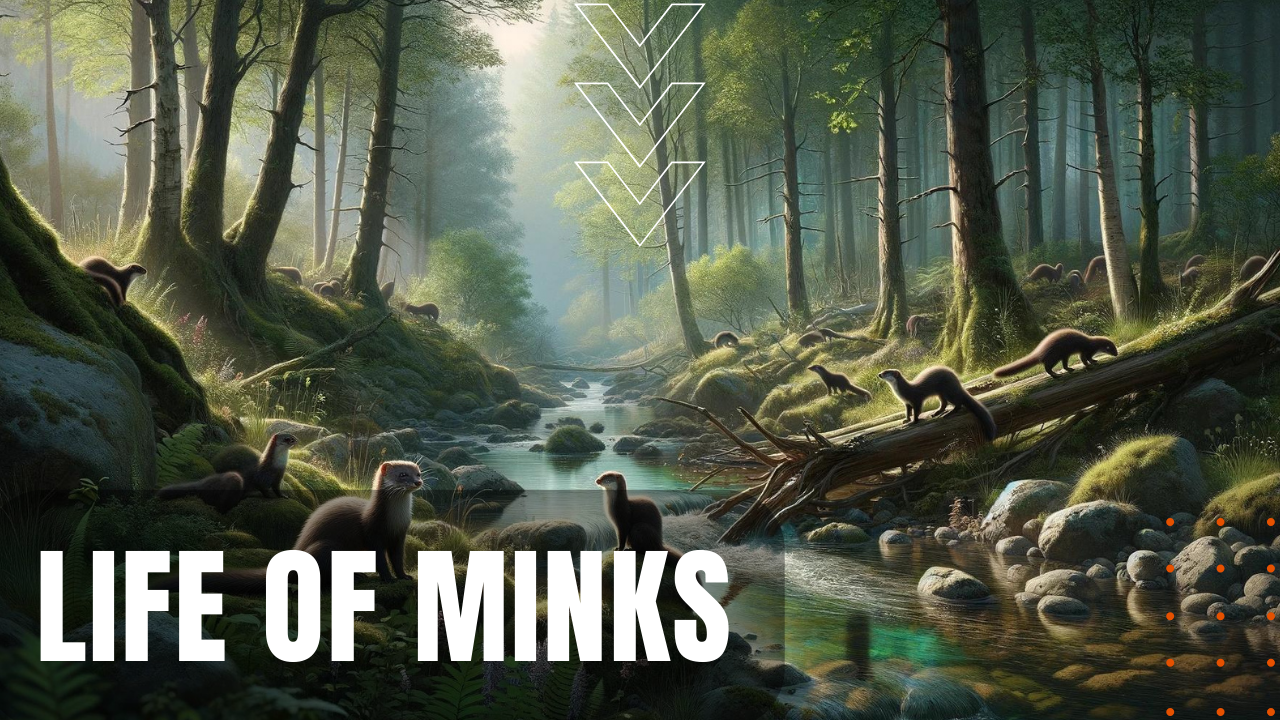The Life of Minks

Of the family Mustelidae, which includes weasels, badgers, otters, martins and wolverines, the 15 subspecies can be found in the American and European mink species, although the two species are not as closely related as once believed. Known as aggressive semi-amphibious carnivores, a mink’s diet includes rodents, fish, crustaceans, amphibians and birds, oftentimes fearlessly attacking prey many times larger than themselves.
Built for Burrows
Possessing long, slender bodies with short legs and pointy faces—a physique which lends itself to entering the burrows of their prey—males are generally 13-24 inches long, while females measure 12-15, weighing in at anywhere between one and three pounds. Long sought after for their luxurious fur, minks have been farmed or trapped at far greater numbers than fox and sable combined. While the North American mink has been wildly imported into Europe, Asian and South America, its introduction into Europe has led zoologists to classify the American Mink as an invasive species responsible for a dramatic decline in European mink, Pyrenean desman and water vole populations.
Bradycardia While Swimming
Possessing partially webbed feet, mink undergo bradycardia while swimming, which allows them to conserve oxygen during warm water swims up to three hours and cold water swims as long as 27 minutes. Relying heavily on eyesight for hunting their prey, a mink’s auditory perception is high enough to detect the ultrasonic vocalizations of their rodent prey. Living primarily in rocky coastal regions with broad littoral zones and dense forestation, minks make their dens in burrows along riverbanks, holes in logs, tree stumps or roots, typically avoiding contact with other minks, unless of the opposite sex.
Mating 101
During their mating season ranging from February in southern climates to April in northern climates, a female mink’s ovulation is induced by the presence of males, which sparks a three-week mating season followed by a gestation period ranging from 40 to 75 days. Delivering their young in average litters of four, kits open their eyes after 25 days, while fully weaned from their mothers at five weeks of age. By eight weeks of age, young minks begin to hunt, remaining close to their mothers until the early Fall, when they become fully independent in the wild, making the life of minks, an aggressive super midget species of the animal world.
